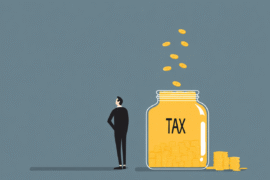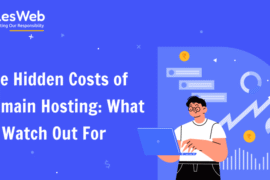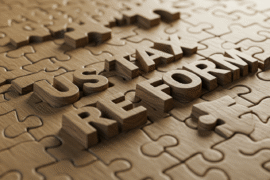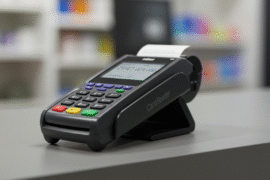This article may contain references to products or services from one or more of our advertisers or partners. We may receive compensation when you click on links to those products or services. Nonetheless, our opinions are our own.
The information presented in this article is accurate to the best of our knowledge at the time of publication. However, information is subject to change, and no guarantees are made about the continued accuracy or completeness of this content after its publication date.
You started your side hustle in your spare bedroom three years ago. Maybe it was an e-commerce store, a consulting practice, or a SaaS product you built on weekends. Fast forward to today, and you’re pulling in $15,000 a month in revenue. The work is eating up your evenings and weekends, and you’re wondering: could I actually sell this thing?
Most side hustlers never consider that their weekend project might be worth real money to someone else. But here’s the reality: small online businesses are selling every day, often for amounts that would surprise you. The question isn’t whether your side hustle has value. It’s whether you know how to figure out what that value is.
- When does a side hustle become sellable?
- The basic formula for valuing small businesses
- What makes your multiple higher or lower
- What different types of side hustles actually sell for
- Common valuation mistakes small business owners make
- When to value it yourself vs. getting professional help
- Getting your business ready for sale
- What to do next
- Recommended Reads
When does a side hustle become sellable?
Not every side hustle is ready for sale. A business needs certain characteristics before buyers will take it seriously.
First, you need consistent revenue over time. One great month doesn’t cut it. Buyers want to see at least 12 months of financial history, preferably 24 months or more. They’re looking for patterns. Is revenue growing? Staying flat? Seasonal? These trends tell a story about what they’re buying into.
Second, the business needs to make an actual profit. Revenue is exciting, but profit is what matters. If you’re bringing in $10,000 a month but spending $9,800 on ads and tools, you don’t have a sellable business. You have an expensive hobby that’s draining your savings instead of building wealth.
Third, you need systems that don’t completely depend on you. This is where many side hustlers stumble. If the business falls apart the moment you step away, buyers will see that as a massive risk. You don’t need a full team or complex operations, but you do need documented processes and some degree of automation.
Finally, the revenue needs to be real and verifiable. Cash in your bank account from actual customers. Not projected revenue. Not what you think you could make if you tried harder. Actual, provable income that you can show in bank statements and accounting records.
If your side hustle checks these boxes, it might be time to think seriously about valuation. For businesses generating significant earnings (typically $1 million+ EBITDA), hiring an investment bank to handle the sale can increase your final sale price by 6% to 25% according to industry data. But before you get there, you need to understand what your business is actually worth.
The basic formula for valuing small businesses
Business valuation sounds complicated, but the basic approach is straightforward. Buyers look at your profit and multiply it by a number. That number is called a multiple.
The profit they care about isn’t the same as what shows up on your tax return. It’s called Seller’s Discretionary Earnings, or SDE. Think of SDE as the total financial benefit the owner gets from the business. It includes your profit plus your salary plus any personal expenses you run through the business.
Here’s a simple example. Your side hustle brings in $180,000 in revenue per year. After paying for inventory, software subscriptions, advertising, and everything else, you have $60,000 in profit. You also pay yourself a $30,000 salary for the work you do. Your SDE is $90,000.
Buyers will offer you a multiple of that SDE. For most side hustles and small online businesses, multiples typically range from 2x to 4x according to Investopedia. So a business with $90,000 in SDE might sell for anywhere from $180,000 to $360,000.
Why such a big range? The multiple depends on how attractive your business is to buyers. A stable, growing business with diverse revenue streams and low owner involvement gets a higher multiple. A business that’s declining, depends entirely on one customer, or requires 60 hours of work per week gets a lower multiple.
What makes your multiple higher or lower
Understanding what increases your multiple is more important than memorizing formulas. These factors determine whether buyers see your business as a safe bet or a risky gamble.
Growth trajectory matters more than size. A business earning $50,000 a year but growing 30% annually will often command a higher multiple than a business earning $100,000 but staying flat. Buyers are purchasing future cash flow, not just current earnings.
Customer diversification is huge. If 60% of your revenue comes from one client, that’s a problem. If that client leaves, the business loses most of its value instantly. Buyers want to see revenue spread across many customers. A business with 200 customers each contributing 1% of revenue is far more valuable than one with five customers each contributing 20%.
Low owner involvement increases value dramatically. If you work five hours per week on the business and everything runs smoothly, buyers will pay significantly more. If you’re working 40 hours per week just to keep things afloat, they’ll factor in the cost of replacing you. This might mean hiring someone at $50,000 per year, which comes straight out of the business value.
Recurring revenue is gold. A subscription business generating $5,000 per month in recurring revenue will sell for more than an e-commerce store generating $5,000 in one-time purchases. Predictable revenue reduces risk, and reduced risk means higher multiples.
Clean, organized financials boost confidence. Buyers get nervous when they can’t understand your numbers. If you have three years of profit and loss statements prepared by an accountant, organized expense records, and clear documentation of where money comes from and goes to, you’ll get better offers. Messy books make buyers wonder what else is disorganized.
Documented systems and processes add value. If everything important about running the business lives in your head, that’s a transfer problem. Buyers want to see written procedures, video tutorials, and clear documentation. This doesn’t need to be fancy. Even simple Google Docs explaining how to handle customer service or fulfill orders make a difference.
Voted "Best Overall Budgeting App" by Forbes and WSJ
Monarch Money helps you budget, track spending, set goals, and plan your financial future—all in one app.
Get 50% OFF your first year with code MONARCHVIP
What different types of side hustles actually sell for
Different types of businesses command different multiples based on their characteristics and risks.
Content websites and blogs typically sell for 30x to 40x monthly profit. A blog earning $2,000 per month in profit might sell for $60,000 to $80,000. These businesses often have lower multiples because traffic can be volatile and depends heavily on search engines or social media algorithms.
E-commerce stores generally fall in the 2.5x to 3.5x SDE range. A store doing $200,000 in revenue with $80,000 in SDE might sell for $200,000 to $280,000. The multiple depends heavily on whether you’re selling your own products or dropshipping, how much inventory comes with the sale, and whether you have strong brand recognition.
SaaS products and software businesses command the highest multiples, often 3x to 5x SDE or more. A small SaaS product earning $100,000 in SDE could sell for $300,000 to $500,000. The recurring revenue model and lower overhead make these particularly attractive. However, buyers worry about code quality, technical debt, and whether they can maintain the product.
Service businesses like consulting or agencies typically sell for 2x to 3x SDE. These businesses often have lower multiples because they’re harder to transfer. If clients hired you for your specific expertise, will they stay when you’re gone? The more the business depends on your personal relationships and skills, the lower the multiple.
Amazon FBA businesses usually trade in the 3x to 4x SDE range. A business generating $75,000 in SDE might sell for $225,000 to $300,000. Buyers like the platform stability and fulfillment infrastructure, but worry about Amazon’s constant policy changes and the risk of account suspension.
Common valuation mistakes small business owners make
Side hustlers often overvalue their businesses because they’re emotionally attached or don’t understand how buyers think.
The biggest mistake is confusing revenue with value. Your business does $500,000 in annual revenue, so you think it’s worth half a million dollars. But if you only keep $50,000 after all expenses, that’s what matters. Buyers care about profit, not top-line revenue.
Many sellers count their own sweat equity as value. You’ve worked nights and weekends for three years building this thing. That effort matters to you, but buyers don’t care about your sacrifice. They care about the financial return they’ll get from their investment.
Some sellers overestimate their growth potential. You think the business could easily 10x if someone just had more time to work on it. Maybe that’s true, but buyers discount potential heavily. They’re paying for what the business does today, not what it might do tomorrow.
Others forget to account for working capital. If your e-commerce business has $30,000 in inventory, that inventory usually transfers with the sale. But it’s not additional value on top of your multiple. It’s part of the working capital needed to operate the business.
Many side hustlers don’t consider taxes. If you sell your business for $250,000, you don’t pocket $250,000. Depending on how the business is structured and how long you’ve owned it, you might pay 15% to 37% in taxes according to IRS capital gains rates.
Factor this into your expectations, just like you would with any other investment decision.
When to value it yourself vs. getting professional help
For smaller side hustles, you can get a reasonable valuation estimate on your own. If your business generates under $100,000 in SDE, spending thousands on a professional valuation often doesn’t make sense.
Start by calculating your SDE accurately. Add up 12 months of profit, add back your salary and any personal expenses run through the business, and subtract what it would cost to replace your labor if you work significant hours.
Research comparable sales in your industry. Online business marketplaces like Flippa, Empire Flippers, and Quiet Light publish sold listings with financial details. Look for businesses similar to yours in model, size, and industry. What multiples did they sell for?
Use multiple valuation methods to triangulate a range. Calculate your value using an SDE multiple. Also look at monthly profit multiples if you’re in content or e-commerce. See where these different approaches converge.
But professional help becomes valuable as your business grows or becomes more complex. If your SDE exceeds $200,000, the percentage cost of professional valuation services becomes more reasonable relative to the business value.
Complex businesses benefit from professional valuations too. If you have significant physical assets, intellectual property, complicated customer contracts, or multiple revenue streams, a professional can account for nuances you might miss.
When you’re ready to actually sell, professional help changes the game. Advisors bring buyer networks you don’t have access to. They know hundreds of potential buyers actively looking for businesses like yours. They manage the sale process, handle negotiations, and keep deals from falling apart over small issues.
According to Forbes, working with a business broker or M&A advisor typically costs 10% to 15% of the sale price but can result in significantly better terms and fewer failed deals.
Getting your business ready for sale
The time to think about valuation isn’t when you’re ready to sell. It’s right now.
Start separating your personal and business finances completely. Open a dedicated business bank account. Run all revenue through that account and pay all business expenses from it. This makes due diligence infinitely easier and builds buyer confidence.
Document everything about how the business runs. Create simple written guides for every repeated task. Where do you source products? How do you handle customer complaints? What’s the monthly content calendar? How do you process orders? Pretend you’re going on vacation for six months and someone else needs to run things.
Build systems that reduce your personal involvement gradually. Can you hire a virtual assistant to handle customer service? Can you automate your social media posting? Can you train someone to manage your ad campaigns? Even if you still work in the business, having these systems in place proves it can run without you.
Diversify your revenue sources and customer base. If you rely on one traffic source, develop others. If you have a few big customers, focus on acquiring more smaller ones. If all your revenue comes from one product, add complementary offerings.
Clean up your expenses and understand your true margins. Are you paying for software you don’t use? Subscriptions you forgot about? Get your operating costs as lean as possible, but make sure you’re not cutting things that actually drive revenue. This kind of financial discipline is just smart business practice, whether you’re planning to sell or building passive income streams for the long term.
Keep detailed financial records month by month. Create simple profit and loss statements showing revenue, cost of goods sold, operating expenses, and profit. Track these numbers consistently. Even a basic spreadsheet is fine, but the data needs to be accurate and complete.
What to do next
Your side hustle represents years of effort, learning, and risk-taking. Understanding its real value is about more than getting a number. It’s about seeing the business through a buyer’s eyes and recognizing what makes it valuable to someone else.
Start tracking your numbers seriously if you haven’t already. Calculate your actual SDE. Be honest about what multiples businesses like yours command in the market. Look at what you could do to increase that multiple over the next 12 to 24 months.
Maybe you’re not ready to sell today. That’s fine. But building a sellable business is the same as building a better business. The things that increase your valuation are the same things that make your side hustle more profitable, more stable, and easier to run.
And if you are ready to sell? Now you know how to think about what your business is actually worth. You know what buyers look for, what drives value up or down, and when it makes sense to bring in professional help.
The side hustle you built in your spare time might be worth more than you think. But only if you understand how to measure and communicate that value properly.

Reviewed and edited by Albert Fang.
See a typo or want to suggest an edit/revision to the content? Use the contact us form to provide feedback.
At FangWallet, we value editorial integrity and open collaboration in curating quality content for readers to enjoy. Much appreciated for the assist.
Did you like our article and find it insightful? We encourage sharing the article link with family and friends to benefit as well - better yet, sharing on social media. Thank you for the support! 🍉
Article Title: How to Value Your Side Hustle When It’s Time to Sell
https://fangwallet.com/2025/10/12/how-to-value-your-side-hustle-when-its-time-to-sell/The FangWallet Promise
FangWallet is an editorially independent resource - founded on breaking down challenging financial concepts for anyone to understand since 2014. While we adhere to editorial integrity, note that this post may contain references to products from our partners.
The FangWallet promise is always to have your best interest in mind and be transparent and honest about the financial picture.
Become an Insider
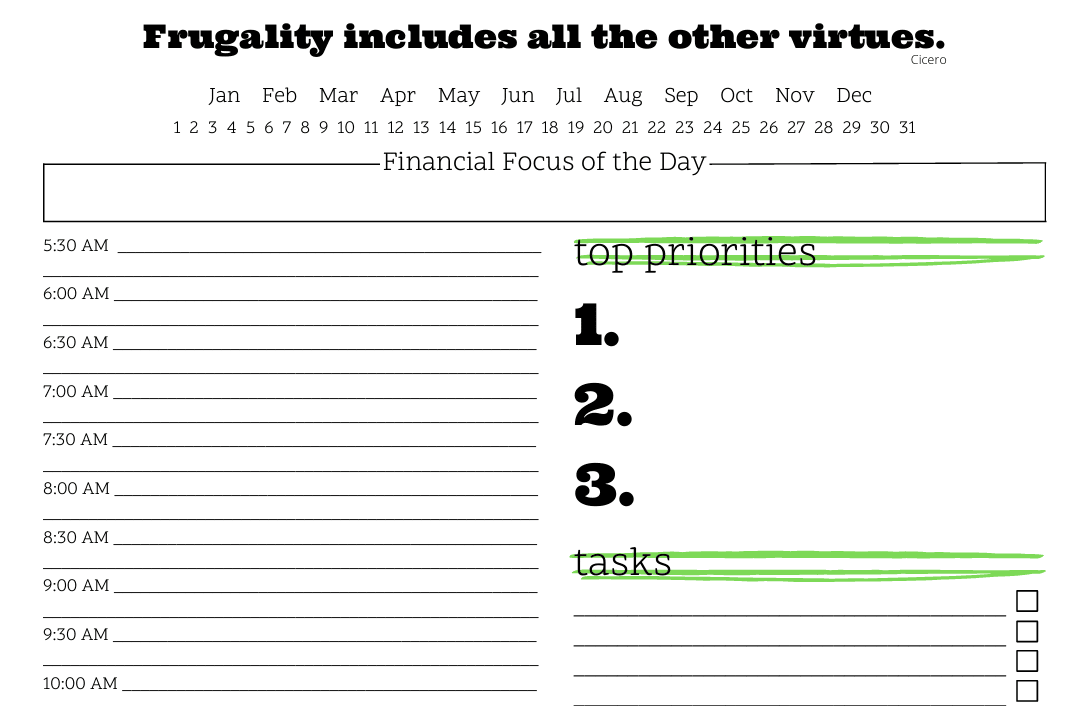
Subscribe to get a free daily budget planner printable to help get your money on track!
Make passive money the right way. No spam.
Editorial Disclaimer: The editorial content on this page is not provided by any of the companies mentioned. The opinions expressed here are the author's alone.
The content of this website is for informational purposes only and does not represent investment advice, or an offer or solicitation to buy or sell any security, investment, or product. Investors are encouraged to do their own due diligence, and, if necessary, consult professional advising before making any investment decisions. Investing involves a high degree of risk, and financial losses may occur including the potential loss of principal.
Source Citation References:
+ Inspo
There are no additional citations or references to note for this article at this time.














